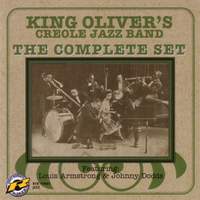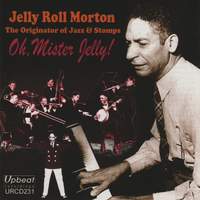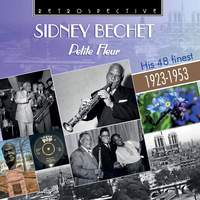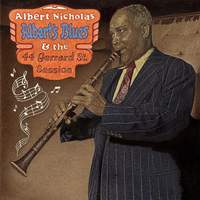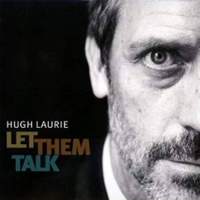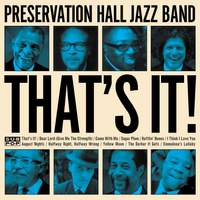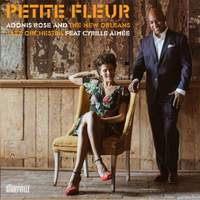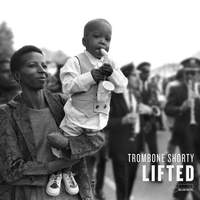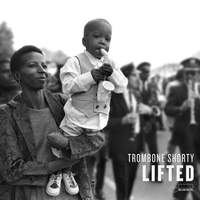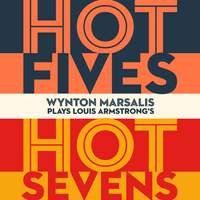Jazz Genre Guides,
New Orleans Jazz

Often hailed as the birthplace of jazz, New Orleans was the location that saw the genre's emergence from a melting pot of different cultures in the early 20th century. This vibrant milieu, with its unique blend of African, Caribbean, European and Latin American influences, provided the perfect backdrop for the development of a new, dynamic musical style. In its infancy, traditional jazz or ‘dixieland’ was distinguished by its novel use of strong rhythms, collective improvisation and a blend of blues, ragtime and brass-band traditions.
For a better understanding of this coming together of diverse influences, look no further than the three main demographics of people occupying the city at the turn of the century: whites, creoles of colour and historically French-or-Spanish-speaking African Americans. As a cultural milieu, New Orleans already played host to a mixed contrast of bands, theatre music, spirituals, work-songs and gospel styles. Musicians from these communities were brought together amidst the repercussions of the Civil War when New Orleans was under occupation by the North, and attempts were being made towards a reconstructed, reintegrated society.
Legally on the side of African-Americans along the lines of the racial divide, the Creole 'privilege' in passing for white meant individuals were better schooled in music, they had higher literacy and access to better facilities. In an era of legally sanctioned racial segregation, Creoles were forced to play with Black musicians once it became economically unstable to sustain their own orchestras and ensembles, leading to a blend of European and African-American cultural practices.

A vast amount of 'hot jazz' musicians migrated to Chicago during the 1920s as part of the Great Migration, when hundreds of thousands of African Americans left the South for industrial cities in the north to find work. And, with the dawning of the sound recording age, it wouldn't be long before the immigrant New Orleanians began upstaging the Chicago players. The phonograph records produced within these small centres of jazz activity served as a backwater from which many musicians came and subsequently looked back on, charting years of previous history and marking the transition of original New Orleans jazz to a more sophisticated type of American improvised music.
The New Orleans Jazz Revival in the aftermath of World War Two had a lasting impact on both the preservation and the evolution of jazz, having endured and evolved over the past century. Established in 1961, Preservation Hall in the city’s French Quarter became a focal point for the tradition; its house band is one of the most iconic ensembles dedicated to preserving the authentic New Orleans sound. Continuing to perform and promote the classic style, the non-profit organisation extends the heritage of early jazz greats and ensures the music’s survival for future generations.
In essence, New Orleans jazz is a living, breathing tradition that has continuously adapted and thrived, thanks to the contributions of its pioneering musicians and the dedication of contemporary artists who honour its legacy while pushing its boundaries.
Discover some of the hottest examples of New Orleans Jazz below...
Formed in the early 1920s, Oliver's band became a cornerstone of early jazz, recognised for its tight ensemble playing and the introduction of more sophisticated arrangements. Moving between New Orleans and Chicago, the group's most famous lineup included a young Louis Armstrong, whose innovative cornet playing helped propel his mentor's group to national acclaim.
Available Formats: MP3, FLAC/ALAC/WAV
One of the first musicians to carve out a new identity for creole performers, Jelly Roll Morton was performing by his late teens in the city’s red-light district known as Storyville, where he honed his skills as a pianist and entertainer. The self-proclaimed inventor of jazz, Morton is often credited with transforming ragtime into early jazz by introducing more complex rhythms, richer improvisation and a swinging feel.
Available Format: CD
He may have popularised jazz across Europe, but New Orleans will always be home to this virtuoso of the soprano saxophone. One of the first to pick up the underestimated reed instrument, Bechet's prolific career led to its rising popularity within the genre. His ability to blend opulent improvisation with heartfelt melodic statements made him a standout performer, with a uniquely expressive style that helped define the sound of early jazz.
Available Formats: 2 CDs, MP3, FLAC/ALAC/WAV
Having co-led a band with King Oliver during the 1910s, this legendary trombonist was known for his innovative 'tailgating' technique. This approach involved a robust and playful use of his instrument's slide, often creating a counter-melody that complemented and enhanced the main melody played by the rest of the band. Ory's tailgating style added a rhythmic and harmonic depth to his ensembles, contributing to the polyphonic texture of hot jazz.
Available Format: 2 CDs
In bringing his exceptional clarinet artistry to London, Nicholas not only helped revived interest in classic jazz during the 1950s, but also fostered a transatlantic exchange that enriched London’s musical community. Introducing a touch of vintage elegance to the British music scene, his work is remembered for its profound influence on both the preservation and evolution of early styles.
Available Formats: CD, MP3, FLAC/ALAC/WAV, Hi-Res FLAC/ALAC/WAV
Never having attempted to become a virtuosic soloist, it took a long time for Lewis to achieve fame. With his career having been halted by financial constraints, the clarinettist used music as a therapeutic lifeline following an accident at work in 1944 — a signature recording of 'Burgundy Street Blues' was made at his bedside while he was recovering. Known as the 'father of Revivalism', the 57 year-old's first visit to Britain was a tremendously significant occasion for devotees of New Orleans music. His recordings reached the UK, influencing our own Monty Sunshine and Acker Bilk, and his UK tour with Ken Colyer was greatly received as the second coming of the classic New Orleans movement.
Available Formats: CD, MP3, FLAC/ALAC/WAV
Fast forward to the 21st century, and comedian Hugh Laurie has been starring in the hit TV show 'House' for over half a decade. A mainstay of our screens since first appearing in the 1981 Cambridge Footlights Revue, the actor has made no secret of his love of jazz (nor his schmaltzy keyboard chops) so, in 2011, he decided to make a record. Featuring horn arrangements by Allen Toussaint, Laurie's delectable first album is an enchanting ode to New Orleans, and became the biggest-selling blues album in the UK that year.
Available Format: 2 Vinyl Records
Since its establishment in 1961, Preservation Hall has been a central hub for the preservation and celebration of traditional New Orleans music. With the original aim of creating a space where its lauded cultural heritage could be showcased to both locals and visitors, the venue is famous for its intimate, no-frills setting. There are no modern amenities, like fancy lighting or elaborate staging – just pure, unadulterated jazz in a historic space.
Available Format: CD
This legendary singer's work often involves interpreting different aspects of jazz history, including (most notably, on this album with the 18-piece New Orleans Jazz Orchestra) the contributions of New Orleans musicians. Understanding its vital importance, Bridgewater seeks to uphold that history in her performances, celebrating the city's rich musical background in an effort to bring its traditional sounds to contemporary audiences.
Available Formats: MP3, FLAC/ALAC/WAV, Hi-Res FLAC/ALAC/WAV
A direct reflection of the cultural exchange of early jazz, the fusion of traditional New Orleans styles with contemporary elements on this album respect legacies of musicians who bridged American and European musical worlds. A dialogue between historical forms and current musical innovations, the presence of vocalist Cyrille Aimée helps to celebrate their influence on both sides of the Atlantic.
Available Formats: CD, MP3, FLAC/ALAC/WAV
Exemplifies the vibrancy and diversity of contemporary jazz and funk, the native New Orleanian's latest album is a significant addition to his discography that showcases his talent as a musician and bandleader. Hailing from a family steeped in the secondline traditions of jazz funerals and Mardi Gras, this album’s theme revolves around resilience, celebration and upliftment, drawing on the charismatic trombonist's personal experiences and the spirit of New Orleans.
Available Formats: CD, MP3, FLAC/ALAC/WAV, Hi-Res FLAC/ALAC/WAV
Armstrong’s Hot Fives and Hot Sevens sessions, captured between 1925–28, are considered some of the most influential recordings in history. These takes captured early innovations, such as Armstrong’s groundbreaking improvisation and virtuosic horn playing. Wynton Marsalis, a prominent contemporary musician and educator, has frequently cited Armstrong as a major influence on his own career. Marsalis’s respect for Armstrong’s contributions motivated him to honour Pops' legacy via his own interpretations, demonstrating the techniques and styles which made those original performances so revolutionary.
Available Formats: MP3, FLAC/ALAC/WAV, Hi-Res FLAC/ALAC/WAV


